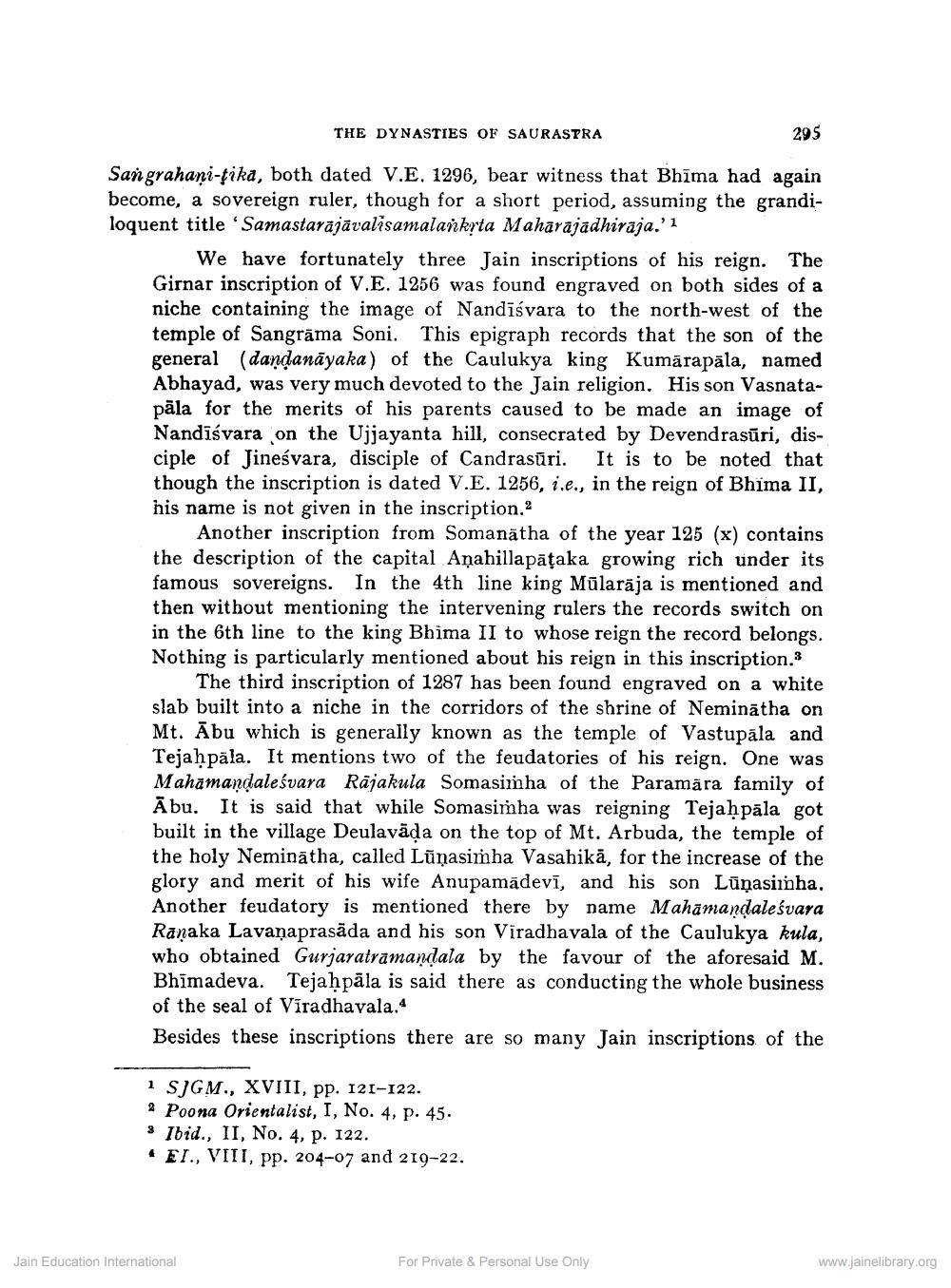________________
THE DYNASTIES OF SAURASTRA
295
Sangrahani-ţika, both dated V.E. 1296, bear witness that Bhīma had again become, a sovereign ruler, though for a short period, assuming the grandiloquent title 'Samastarājāvalisamalankyta Maharajadhiraja.'1
We have fortunately three Jain inscriptions of his reign. The Girnar inscription of V.E. 1256 was found engraved on both sides of a niche containing the image of Nandīśvara to the north-west of the temple of Sangrama Soni. This epigraph records that the son of the general (dandanāyaka) of the Caulukya king Kumärapäla, named Abhayad, was very much devoted to the Jain religion. His son Vasnatapāla for the merits of his parents caused to be made an image of Nandīśvara on the Ujjayanta hill, consecrated by Devendrasūri, disciple of Jineśvara, disciple of Candrasūri. It is to be noted that though the inscription is dated V.E. 1256, i.e., in the reign of Bhima II, his name is not given in the inscription.2
Another inscription from Somanātha of the year 125 (x) contains the description of the capital Aşahillapāțaka growing rich under its famous sovereigns. In the 4th line king Mūlarāja is mentioned and then without mentioning the intervening rulers the records switch on in the 6th line to the king Bhima II to whose reign the record belongs. Nothing is particularly mentioned about his reign in this inscription.
The third inscription of 1287 has been found engraved on a white slab built into a niche in the corridors of the shrine of Neminātha on Mt. Ābu which is generally known as the temple of Vastupāla and Tejahpala. It mentions two of the feudatories of his reign. One was Mahamandalesvara Rājakula Somasimha of the Paramāra family of Ābu. It is said that while Somasimha was reigning Tejahpāla got built in the village Deulavāda on the top of Mt. Arbuda, the temple of the holy Neminātha, called Lūņasimha Vasahikā, for the increase of the glory and merit of his wife Anupamādevī, and his son Lūņasimha. Another feudatory is mentioned there by name Mahamandalesvara Ranaka Lavaņaprasāda and his son Viradhavala of the Caulukya kula, who obtained Gurjaratramandala by the favour of the aforesaid M. Bhimadeva. Tejahpāla is said there as conducting the whole business of the seal of Vīradhavala.4 Besides these inscriptions there are so many Jain inscriptions of the
1 SIGM., XVIII, pp. 121-122. 2 Poona Orientalist, I, No. 4, p. 45. 3 Ibid., II, No. 4, p. 122. • EI, VIII, pp. 204-07 and 219-22.
Jain Education International
For Private & Personal Use Only
www.jainelibrary.org




